Our History
Our City has a long proud history, and our resources, people and suburbs have played an important part in the development of our state. In March 1996 the City of Enfield amalgamated with the City of Port Adelaide to become the City of Port Adelaide Enfield.
Pre-European history of Port Adelaide
An understanding of Kaurna history and knowledge is integral to the history and cultural development of the Port Adelaide Enfield area. Kaurna people have occupied the lands we now know as Port Adelaide for thousands of years, and the region is of great importance for Aboriginal people. The Kaurna people called the land around the Port River Yertabulti, (Yerta meaning place or land, and Bulti meaning sleep or death).
The Wirra Kaurna, a northern tribe, occupied land on the eastern bank of the Port River, while the Port River Tribe resided on the western bank of the river, with their territory stretching from West Lakes to the tip of the Lefevre Peninsula, and from Glanville to the sea. The Port River Tribe’s totem was Kudlyo, the Black Swan.
The Kaurna people have a strong spiritual attachment to and partnership with the land, and the rich and diverse eco-zone of the Port Adelaide region prior to European settlement, provided them with food, shelter, and areas of spiritual significance. The river provided flax, rushes, reed covered dunes, mangrove forests and marshes and swamps, which offered fish, crabs and oysters as food sources, flax was used to make nets to catch fish and hunt game animals such as kangaroo, while reeds were made into mats, baskets and clothing, and trees and plant life, including the gum and honeysuckle, provided shelter and could be used to make tools.
The Port Adelaide tribe lived in camps around the Port waterways and beaches during the summer time, and in the winter they moved east into the foothills. Ityamiitpinna, also known as King Rodney, reported to be the first Kaurna man encountered by the Europeans when they arrived at Port Adelaide in 1836, lived in a summer camp his wife Tangkaira and their daughter Ivaritji and other members of their family group, in the area near the lighthouse near Commercial Road.
References
Port Adelaide: Tales from a ‘commodious harbour’, John Couper-Smartt, 2003, Friends of the South Australian Maritime Museum Inc. pg 32.
Kudlyo the Black Swam Dreaming: Veronica Brodie and the continuity of Kaurna history at Glanville and Le Fevre peninsula, Research report prepared for the Lartelare Homeland Association, by Sheridah Melvin, June 1994.
Kaurna cultural heritage survey, July 2007, Vivienne Wood, Heritage Consultant, for the City of Port Adelaide Enfield.
Mudlangga to Yertabulti track, Lewis O’Brien, City of Port Adelaide Enfield brochure.
Port Adelaide History
Port Adelaide is an historic area which was central to the colonisation of South Australia dating right back to its inception in 1836 when Colonel William Light first sailed up the Port River. Port Adelaide has been the gateway to trade and commerce in South Australia and the first contact with South Australia for thousands of emigrants when they arrived by ship.
- On 19 April 1831 Captain Collet Barker first sighted the Port River Inlet.
- In December 1836 Colonel William Light sailed up the Port River proclaiming, "There was no safer place or more commodious harbour in the world for merchant ships".
- On 14 October 1840 a new landing place at the end of what is now Commercial Road was officially opened and for a while was known as the New Port, to differentiate it from the original landing place at the intersection of todays Old Port Road and Webb Street which became known as the Old Port.
- On 25 May 1837 the Port River estuary was proclaimed a legal port by Governor Hindmarsh.
- On 27 December 1855 Port Adelaide was declared a Corporate Town.
- In 1884 the District Council of Portland Estate amalgamated with the Corporate Town of Port Adelaide.
- In 1886 the District Council of Birkenhead amalgamated with the Corporate Town of Port Adelaide.
- In 1898 the District Councils of Queenstown and Alberton amalgamated with the Corporate Town of Port Adelaide.
- In 1899 the District Council of Rosewater amalgamated with the Corporate Town of Port Adelaide.
- On 13 November 1900 the Corporate Town of Semaphore amalgamated with the Corporate Town of Port Adelaide.
- On 23 May 1901 Port Adelaide was proclaimed a City by the Governor, Lord Tennyson to become the City of Port Adelaide.
Enfield History
Enfield was predominantly a farming area, with fertile country along the River Torrens and wheat and grain fields in its northern reaches. The area also boasts Sunnybrae Farm, the site of the first waterborne sewerage system in Australia; Yatala Gaol; the Sir Ross and Keith Smith England to Australia flight landing site and Klemzig, where German immigrants fleeing persecution in Prussia, established a village.
- In 1853, an area of around 130 kilometres extending from Salisbury in the north, to the River Torrens in the east and adjoining Port Adelaide in the west, including the villages of Enfield, Prospect, Klemzig and Walkerville, was incorporated in the District Council of Yatala. The land was first surveyed in 1837, but was not fully realised until the late 1840-50's because of limited fresh water.
- In 1855 the Village of Walkerville separated from Yatala to become the District Council of Walkerville.
- In July 1868 Yatala was divided into Yatala South and Yatala North, with any land south of Dry Creek becoming Yatala South.
- In August 1872 the Village of Prospect separated from Yatala to become the District Council of Prospect.
- In July 1935 Yatala South was renamed the District Council of Enfield.
- In April 1944 the District Council of Enfield became the Municipality of Enfield.
- In January 1953 the Municipality of Enfield became the City of Enfield.
